Cannabis consumption has gone well beyond lighting up some flower. Now, one of the most popular ways to consume cannabis is through vaping (or “dabbing”), smoking, and eating concentrated oils of the plant. These oils are commonly known as concentrates and come in many forms. There are over a dozen types of concentrates that vary in terms of extraction process, solvents, texture, appearance, potency, and experience.
This article will give an in-depth rundown of what concentrates are as well as each specific type.
What are Cannabis Concentrates?
Cannabis concentrates refer to the oil extracted from marijuana flower. Concentrates preserve the cannabinoids and terpenes present in flower while eliminating excess plant material, creating a highly potent and pure cannabis product. Concentrates contain much higher amounts of cannabinoids and terpenes than flower alone, with THC content typically ranging from 60% to 97%. In comparison, flower typically holds around 15-30% THC.
Terpenes and cannabinoids are to thank for the plant’s flavor and aroma as well as the specific effects of the high. In cannabis, these cannabinoids and terpenes are held in the plant’s trichomes; also known as kief, trichomes are the sparkly resin glands on the surface of buds. To make concentrates, the bud’s trichomes are isolated and then turned into various types of extracts.
How to Consume Concentrates
Cannabis concentrates can be consumed in multiple ways. Consumption routes vary by the type of concentrate, but generally, cannabis oil can be consumed by vaping (also known as dabbing), eating, or smoking.
The most popular method of consuming concentrates is vaping. This can be done through a vape cartridge, dab rig, or electronic vaporizer. Though not as effective, concentrates can also be smoked. The most popular way to smoke concentrates is by infusing it into a joint or topping a bowl with it. Further, concentrates can be eaten. Certain concentrates can be safe to consume orally as is, while others require “activating” the THC first.
We will dive further into the different consumption methods possible for each type of concentrate below.
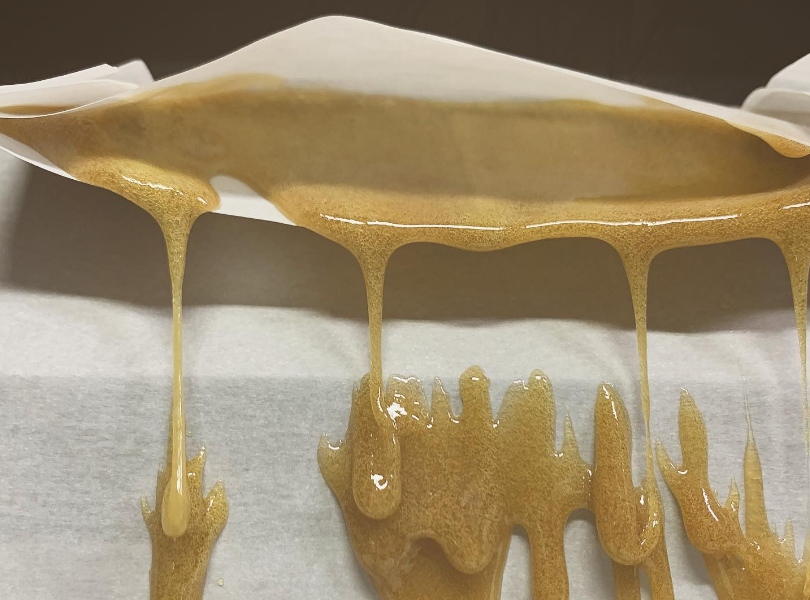
Rosin made by Knots Cannabis flowing from the press | @knots.cannabis
Choosing the Right Cannabis Extract
With so many options available, it may be hard to decide which concentrate to choose. They may seem similar on the surface, and while they do share many things in common, each concentrate holds its own unique take on a traditional cannabis high and consumption experience. Concentrates can vary by texture, appearance, consistency, potency, and experience. All of which are based off of the extraction method and materials used. Some concentrates are extracted using solvents like butane, while other concentrates are completely solventless.
Other Terms for Cannabis Concentrates
While concentrate is the most popular way to refer to this type of cannabis, other terms are also used to describe it. These terms include: extracts, oil, and wax. They all refer to the same thing interchangeably.
Let’s take a closer look at each type of cannabis concentrate.
Live Resin
Live resin is the most popular concentrate in the US in 2022, holding a 34% market share. Its popularity is mainly due to its elevated flavor, and its high terpene content is to thank for that. Live resin is produced using freshly harvested and immediately frozen flower. The word “live” refers to that specific material used since the plant never has the chance to dry out and cure. After harvest, the plant material is immediately frozen using flash-freezing or a cryogenic process, which preserves the most terpenes and cannabinoids. Then, this material is typically extracted using butane, propane, ethanol, or CO2.
Live resin comes in many forms, including sauce, sugar, diamonds, and wax. It is typically a deep, dark amber color similar to tree sap, which is generally a tad darker than most concentrates. The texture can also be similar to tree sap, with a sticky and runny consistency. The more terpenes it contains, the more fluid and runnier the live resin will be.
Live resin can be consumed through vaping or smoking. To consume it as an edible, it must first be activated, also known as decarboxylation.

Image via Proper
Rosin and Live Rosin
Rosin is extracted from flower, hash, or kief using only heat and pressure; meaning, this concentrate is completely solventless. This often makes for a more flavorful and smooth vaping experience. In fact, this natural process can be done at home using a hair straightener. However, commercial brands use an advanced technique involving an industrial rosin press.
Regular rosin uses dry plant material, while live rosin uses fresh frozen flower, similar to live resin.
Rosin can be consumed through vaping or smoking. To consume it as an edible, it must first be activated.
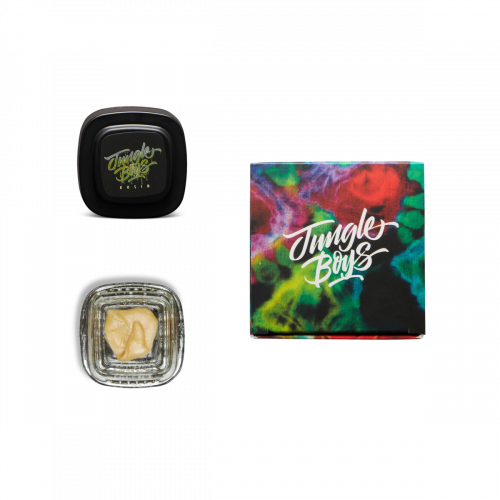
Image via Proper
Cured Resin
Cured resin is created through an extreme drying process. This process enhances the conversion rate of THCA into THC, making it more bioavailable. First, flower is dried for up to 15 days. Then, it is sealed in airtight containers and cured for two weeks to six months. This form of resin is typically incredibly potent due to its enhanced biosynthesis.
Cured resin can be consumed through vaping or smoking. To consume it as an edible, it must first be activated.

Image via MPX
Sauce
Sauce refers to a thick and dense, sticky-looking concentrate. This extract uses either fresh or cured flower, which determines its potency and benefits. Cured sauce uses dried, cured flower. Conversely, live resin sauce uses fresh frozen flower, giving it a higher terpene content. Both types look very similar, so make sure to check the label or ask your budtender. Sauce is extracted using butane, propane, ethanol, or CO2.
Sauce can be consumed through vaping or smoking. To consume it as an edible, it must first be activated.
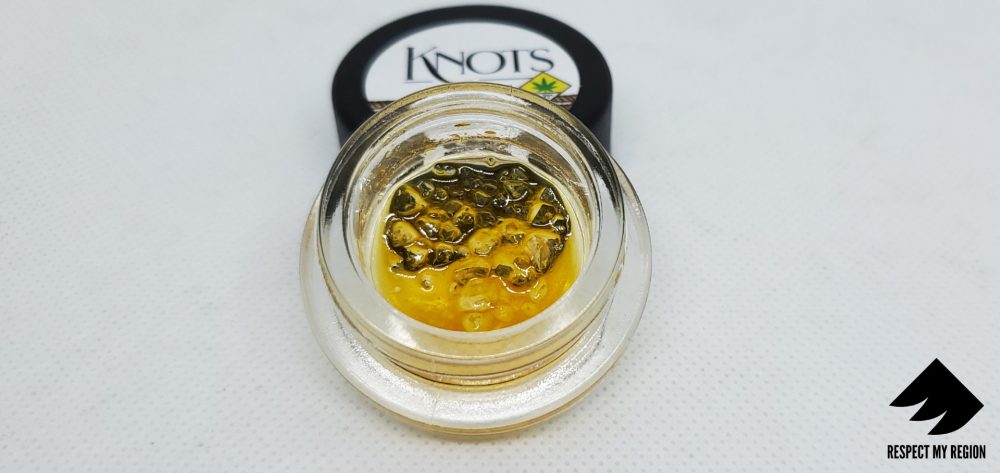
Badder / Budder
Badder, also known as budder, is a soft, putty-like concentrate, similar to soft butter or frosting. It is usually a bright yellow, orange, or golden color. It is one of the easiest concentrates to work with when dabbing. Further, its smooth consistency makes it a great choice for adding to joints, blunts, or bowls. Badder is extracted using butane, propane, ethanol, or CO2.
Badder can be consumed through vaping or smoking. To consume it as an edible, it must first be activated.
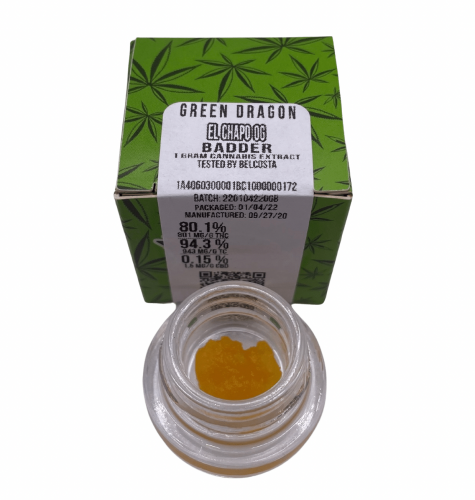
Image via Green Dragon
Sugar
Sugar is a term that refers to any concentrate that has a consistency similar to wet, sticky sugar. It can be made with dried or frozen flower using a variety of extraction methods. Sugar varies greatly in flavor, appearance, and texture depending on the strain and material used. The color ranges from bright yellow to deep amber.
Sugar can be consumed through vaping or smoking. To consume it as an edible, it must first be activated.
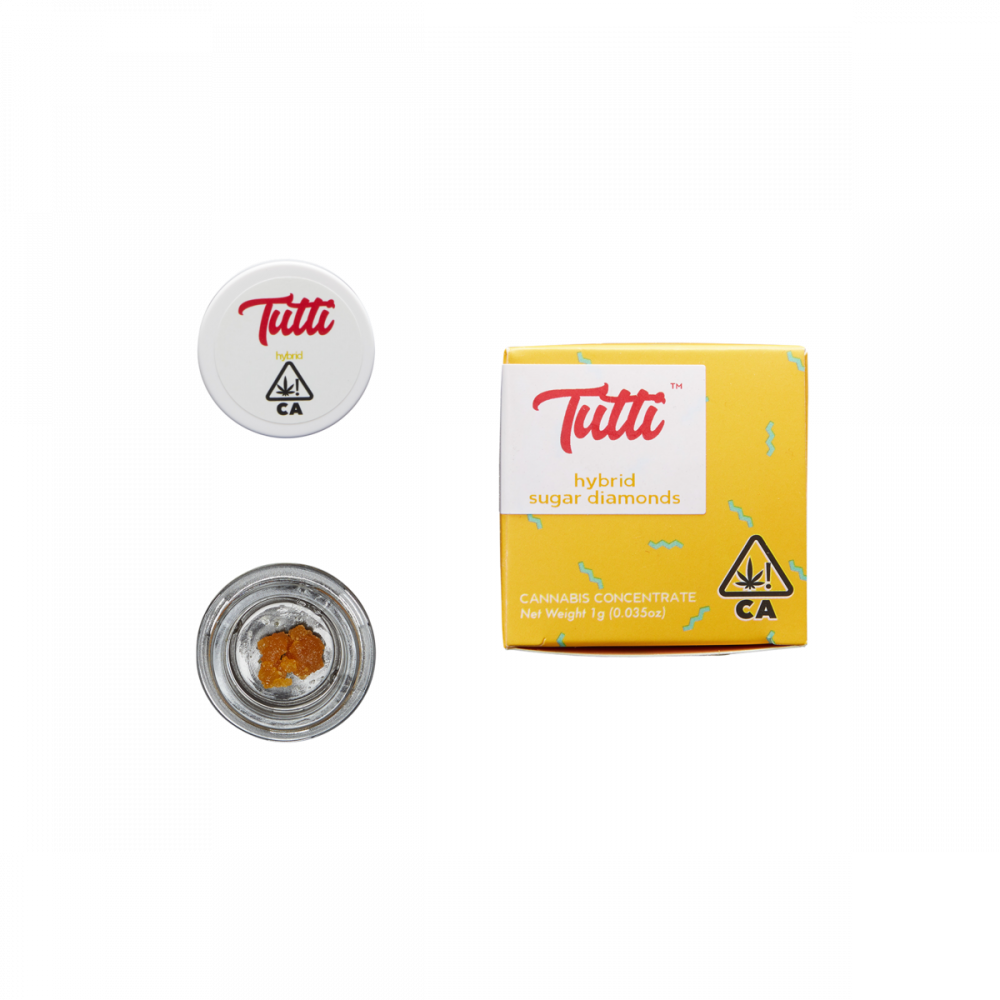
Image via Proper
Shatter
Out of all the cannabis extracts, shatter has the hardest, least sticky consistency. Its appearance is solid and translucent, with a golden yellow color. Its name comes from the way it shatters like glass. Shatter is typically extracted using butane.
Shatter can be consumed through vaping or smoking. To consume it as an edible, it must first be activated.

Image via Rise Cannabis
Wax
Wax is a concentrate named after its appearance and texture. This concentrate has a soft, malleable consistency. Wax is an umbrella term for multiple types of soft concentrates, including crumble and budder. Therefore, the consistency and appearance can vary greatly, ranging from gooey to creamy and light yellow to dark amber.
Wax can be consumed through vaping or smoking. To consume it as an edible, it must first be activated.

Image via Freddy’s Fuego
Crumble
Crumble is a unique cannabis concentrate because it has a dry, powdery consistency. Also called honeycomb, this concentrate is named after the way it crumbles easily. It tends to have a yellow or golden tan color. Typically, crumble is extracted using butane, propane, or CO2.
Crumble can be consumed through vaping or smoking. To consume it as an edible, it must first be activated.

Image via Surterra
Distillate
Distillate is a concentrate that is void of any terpenes, lipids, or plant matter. Instead, it’s refined down to just one specific cannabinoid. This makes it highly potent, with THC levels reaching up to 99%. The oil is translucent and runny with a vibrant golden color. It is typically found in syringes so that’s it’s easier to work with. Distillate is made by heating crude oil from the flower until it vaporizes and then capturing the cannabinoids from the vapors.
Part of what makes distillate special is that it’s already decarbed, so it’s ready to eat without having to activate it. Distillate can also be consumed by vaping or smoking it.
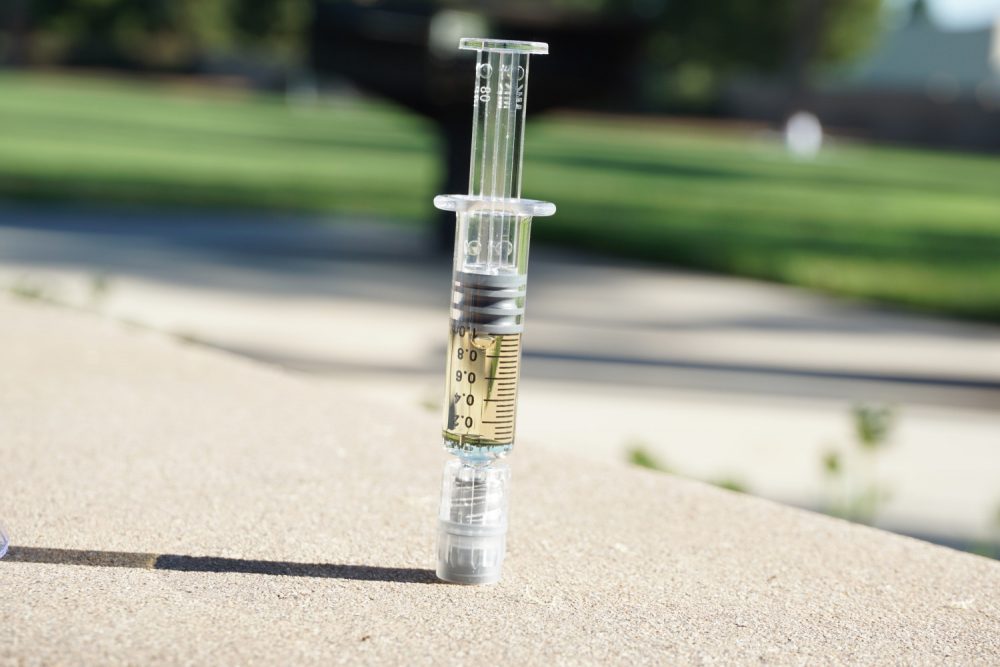
Photo by Elsa Olofsson on Unsplash
Rick Simpson Oil (RSO)
Rick Simpson Oil, better known as RSO, is a unique cannabis concentrate because it is made using the whole plant rather than just the buds. Meaning, RSO contains all the cannabinoids, terpenes, and other compounds of the cannabis plant. Its extraction process is unique because it’s made by washing cannabis buds with a solvent, most commonly grain alcohol, and then evaporating it, leaving behind a thick, nearly black oil.
RSO is known for its many potential strong therapeutic properties, such as treating cancer, MS, and asthma.
RSO can only be consumed by eating it. You can’t vape or smoke RSO due to the high content of lipids and plant matter.

Image via 710 Labs
Full Spectrum Oil
Full-spectrum oil is similar to RSO in the way that it’s extracted from the whole plant. It contains the full profile of the cannabis plant, including a variety of cannabinoids, terpenes, flavonoids, and other compounds like proteins, phenols, sterols, and more. Meaning, this extract contains the full benefits of the plant, making it popular for medical reasons.
Full-spectrum oil is typically extracted using butane, a butane-propane blend, CO2, or pressure. The difficult process rids the oil of any unnecessary components while still keeping much of the desirable compounds.
Full-spectrum oil can be consumed through vaping and smoking. It must be activated first to consume as an edible.

Hash
Hash, also known as hashish, is made from trichomes being removed from the plant and then processed into a concentrated form. This concentrate is solventless as it is made through physical manipulation and temperature changes rather than solvents or chemicals. It typically holds a golden-brown color with a sticky, sandy texture.
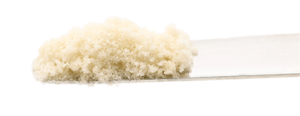
There are two main kinds of hash on the market today: dry sift hash and bubble hash, also known as ice water hash. Dry sift hash is essentially a refined form of kief, made by separating the resin glands through a fine mesh screen. Sometimes this hash gets pressed into a block and can be aged to produce different flavors. Bubble hash, often the higher quality of the two, is made by placing cannabis flower in ice water, which freezes the trichomes. Then, this mixture is stirred to break off the trichomes, which then filters through multiple fine screen bags.
Typically, hash is best consumed by smoking it. However, high-grade ice water hash can be dabbed. Low-quality grades are commonly smoked, pressed into rosin, or used for infusions.
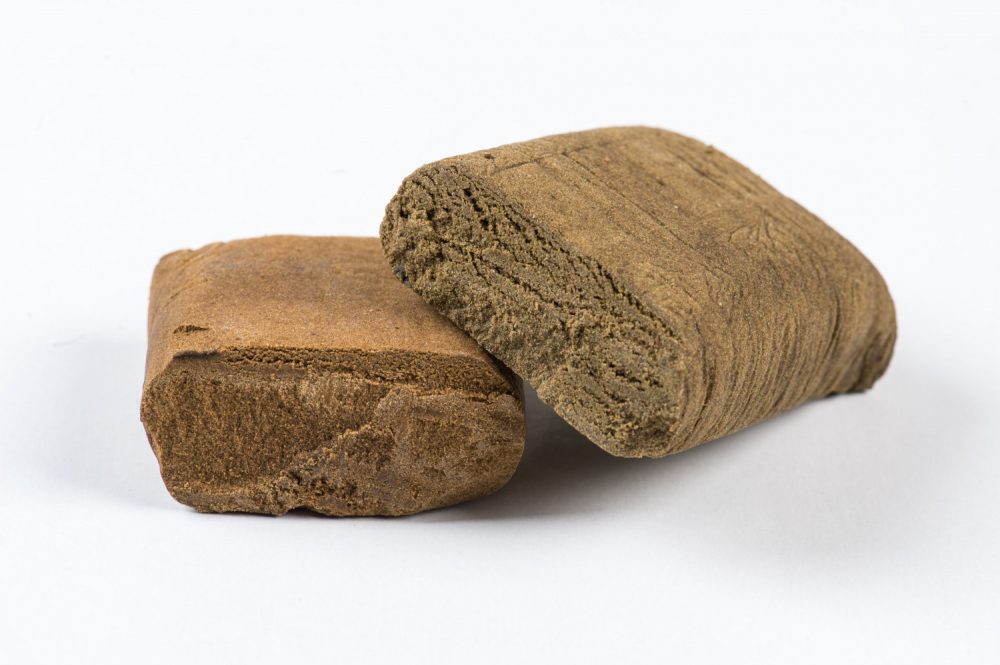
Photo by Hakuna Matata on Unsplash
Kief
Kief is the simplest concentrate as it’s just pure, loose cannabis trichomes. The color is golden brown with a sandy consistency. Also called pollen, kief can be collected in a grinder or by rubbing the buds onto a silk screen.
Kief is best consumed by placing it on top of flower and smoking it. Although, it can also be smoked on its own. Further, it can be used to press into rosin. You can also use kief to make edibles, but decarbing it first is necessary.
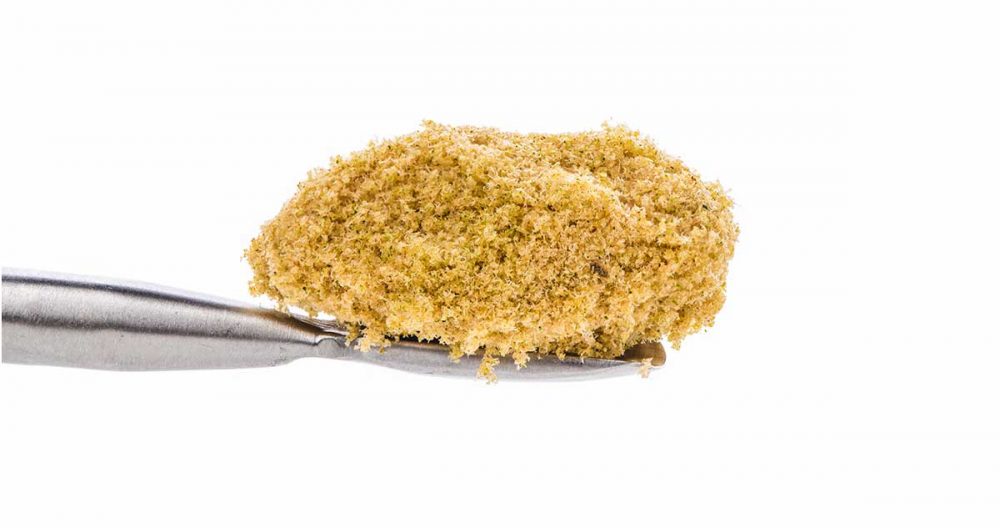
Image via Müv
THCA Diamonds
THCA is the most common cannabinoid in the cannabis plant. It’s a non-psychoactive cannabinoid that converts to the psychoactive THC when heated. THCA diamonds are an extremely pure and potent cannabis concentrate, reaching levels up to 99%. It is extracted using a cold-extraction method and then pressure is added until crystals are formed. Diamonds are typically made with fresh frozen flower, similar to live resin.
These diamonds have a crystalline appearance and range from a light, almost clear color to golden yellow. THCA diamonds can be a dry, almost sandy texture or can be drenched in a saucy consistency.
THCA diamonds are best consumed by vaping but can also be added to flower and smoked. To consume as an edible, it must first be decarbed.

Image via Mohave
More Content
THE RELATIONSHIP BETWEEN BACKWOODS AND HIP-HOP
TERPENES FOR ANXIETY: 3 TERPS IN CANNABIS WITH STRESS-RELIEVING PROPERTIES
RAPPER WEED: WHICH RAPPERS HAVE CANNABIS PRODUCTS IN THE MARKET? WHO ACTUALLY HAS THE FIRE?
18 COMPANIES THAT DON’T DRUG TEST THEIR EMPLOYEES FOR WEED
7 TIPS FOR MARKETING CANNABIS AND CBD ON TIKTOK AND INSTAGRAM

FOR MORE CANNABIS & MUSIC NEWS, FOLLOW RESPECT MY REGION ON FACEBOOK & TWITTER.
TO HAVE A STORY FEATURED OR YOUR BRAND OR PRODUCTS REVIEWED, PLEASE EMAIL US.
More Content
THE RELATIONSHIP BETWEEN BACKWOODS AND HIP-HOP
TERPENES FOR ANXIETY: 3 TERPS IN CANNABIS WITH STRESS-RELIEVING PROPERTIES
RAPPER WEED: WHICH RAPPERS HAVE CANNABIS PRODUCTS IN THE MARKET? WHO ACTUALLY HAS THE FIRE?
18 COMPANIES THAT DON’T DRUG TEST THEIR EMPLOYEES FOR WEED
7 TIPS FOR MARKETING CANNABIS AND CBD ON TIKTOK AND INSTAGRAM








